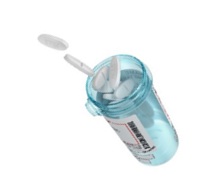 In measuring a patient’s perception of quality healthcare, the first question asked in a HCAHPS survey pertains to his or her nurse. Travel nurses, like all contingent clinicians, play a vital role in shaping that perception. When travelers fail to complete assignments, for whatever reason, patient care is disrupted and favorable survey scores become more difficult to achieve.
In measuring a patient’s perception of quality healthcare, the first question asked in a HCAHPS survey pertains to his or her nurse. Travel nurses, like all contingent clinicians, play a vital role in shaping that perception. When travelers fail to complete assignments, for whatever reason, patient care is disrupted and favorable survey scores become more difficult to achieve.
Rehiring for positions that have already been filled has additional adverse side-effects:
- A busy staff gets busier, increasing the risk for morale issues, overtime hours, clinical errors, and even burnout
- Onboarding/orientation time and money already spent is spent again
- Redundant processes consume more resources, but create no additional value
- The potential to extend assignments and convert temporary help to permanent is erased
Failed assignments reinforce the need to look beyond fill rates as an indicator of a successful job match. A more telling metric of a quality-minded approach is completion rates. It’s one thing to find a candidate qualified to do the work. It’s another to find one who can be counted on to complete the work. After all, refills are for pharmacies.
So, how can healthcare organizations minimize the risk of hiring contingent clinical candidates who fail to complete assignments? The following outlines a job-matching process that safeguards quality and improves completion rates.
Ideal Job Matching Begins with a Quality Job Description
A successful job match is more than connecting the dots between a job description and a resume. A detailed job description establishes a foundation for selecting and prescreening candidates. As obvious as this is, job descriptions are often under-developed. For example, many job descriptions are simply a list of bullet points: ER nurse, nights, bill rate $70. The information is pertinent, but does little to help the hospital or the candidate determine a potential fit.
Improving completion rates requires a job description that actually describes the job. It needs to reflect a sound clinical understanding of what’s required to be successful in a specific healthcare setting. Clarity around requirements and expectations is best achieved when suppliers provide RNs to collaborate with hospital unit managers to build out unit-specific hiring profiles. This clinical-to-clinical exchange ensures that no job detail is lost in translation and establishes a baseline for an accelerated job-matching process.
PREMIUM CONTENT: Largest Healthcare Staffing Firms in the United States: 2017 Update
Clinician-to-Clinician Interviewing
Armed with this information, nurses experienced in behavioral interviewing can more effectively “peel back the layers” throughout the hiring process. Not only does their expertise enable them to spot discrepancies between a resume and relevant experience, it uniquely positions them to test, even challenge, candidates by asking the right questions.
On the surface, for example, a nurse with L&D experience at a 400-bed facility may look like a good match to fill a L&D position at a similar facility. But does the position require the nurse to float to post-partum? If so, will they have a full load of patients, including hysterectomies and bladder slings? Is the quality of the match jeopardized if there are no residents or anesthetists available around the clock? Answers to these questions create valuable insight as to whether a candidate is capable and comfortable with the scope of the assignment, and helps filter those who look good on paper from those who are truly a good fit. The ability to anticipate and address these issues in the pre-screening process requires clinical insight.
Professional and cultural issues contribute to a failed job match as well. For example, it’s helpful for a unit manager to know how a candidate has handled conflict with another nurse or a patient’s combative family. With completion rates in mind, the time to ask what may seem like peripheral questions is now, not during the assignment.
Compete On Process, Not Bill Rates
Clinician-to-clinician hiring is more than common sense from an outcomes perspective. It accelerates the hiring process without trading in the screening required to minimize the risk of a bad hire. In the current market, the best candidates are submitted to multiple jobs at the same time. If the hiring process is too slow, the candidate takes a job elsewhere. If it’s too fast, proper clinical and behavioral screening protocol are usually short-changed and the completion rate becomes an unknown. Both adversely impact completion rates.
In a climate defined by a shortage of clinicians, the hiring process should be completed within hours of a job application submission. If the hiring manager is too busy to accommodate this timeline, which is common because he or she is already understaffed, a staffing partner should be able to provide the clinical hiring support necessary to make it happen. The ability to make the first offer is a tremendous recruiting advantage. It also positions the hospital to compete for talent on the basis of process rather than bill rate.
A hiring process anchored by clinical expertise allows hospitals to consistently match jobs to traveling healthcare providers who complete their assignments. This creates a domino effect of benefits:
- Continuity of care is maintained
- Staff morale, burnout, and overtime usage are minimized
- Redundant processes and expenses are eliminated
- Less vulnerability to inflated bill rates
- Increases assignment extensions and opportunities to convert temporary help to permanent
And when a patient completes a survey about the quality of care he or she received, answers are more likely to appear in the top boxes of the HCAHPS survey.








